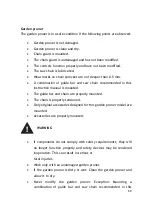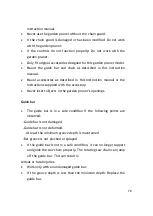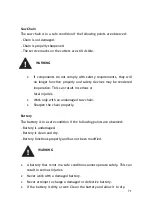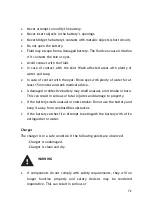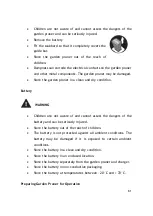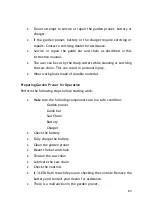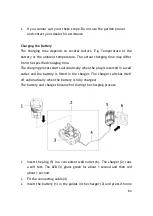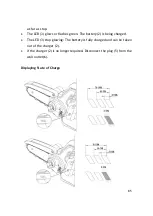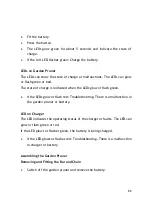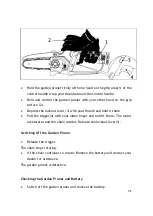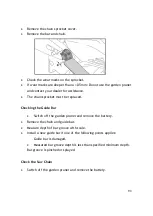
78
•
Overvoltage can occur in the charger if the line voltage or frequency
are incorrect during charging. The charger may be damaged.
•
Make sure the line voltage and frequency agree with the data on the
charger’s rating plate.
•
Carelessly laid connecting or extension cable can be damaged and cause
others to trip or fall. This can result in injuries and may damage the
connecting cable or extension cable.
•
Position and mark connecting cable and extension cable so they do not
represent a trip hazard.
•
Position the connecting and extension cables so that they are not under
tension or entangled.
•
Position the connecting and extension cables so that they cannot be
damaged, kinked, pinched or chafed.
•
Protect the connecting cable and extension cable from heat, oil and
chemicals.
•
Lay the connecting and extension cables on a dry surface.
•
The extension cable becomes hot during operation. If the heat cannot
dissipate, it may cause a fire.
•
If you use a cable drum: Unwind the extension cable to its full length.
•
If electric cables or pipes are embedded in the wall, they may be
damaged when the charger is mounted on a wall. Contact with electric
cables can result in an electric shock.
•
This can result in serious injuries and damage to property.
•
Check that there are no electric cables or pipes embedded in the wall.
•
If the charger is not mounted on the wall as described in this instruction
manual, the charger or the battery may fall down or the charger may
overheat. This may result in personal injuries and damage to property.
•
Mount the charger on the wall as described in this instruction manual.
•
If the charger is mounted on a wall with the battery inserted, the






